Picture this: you're on a construction site, and suddenly, the gray clouds overhead burst open as if in a Hollywood movie. It's just you, the site, and the unforgiving rain. Without proper rain gear, the scene turns from melodramatic to downright awful. A drenched worker is not just uncomfortable and inconvenienced but also exposed to potential health risks and lowered productivity. That's why it's vital to select the right rain gear, specifically designed for construction work.
This comprehensive guide will walk you through the different materials, types, construction methods, features to look for, and other considerations when choosing rain gear for construction work. Our aim is to ensure that you pick a rain gear that not only protects you from the rain, but also caters to your comfort and is built to withstand the wear and tear of the work environment. Read on to understand how to stay dry and keep your productivity flowing, stubbornly fierce rain notwithstanding!
Types of Rain Gear Materials
Whether you're an outdoor enthusiast, a city dweller, or simply someone who loves to stay dry during a downpour, choosing the right rain gear is essential. While design and style are important, the real game-changer will always be the material. The three most common materials used in rain gear manufacturing are PVC Blend, Neoprene, and Polyurethane. All these materials offer excellent advantages; however, each is more suitable for specific situations and uses.
PVC Blend
PVC or Polyvinyl Chloride blends are popular due to their waterproof benefits and cost-effectiveness. They are typically the most affordable option and offer superb waterproofing qualities. However, it's worth mentioning that they can be less breathable compared to other materials. Consider PVC blends if you will use your rain gear intermittently or need gear for light to moderate rain.
Main advantages of PVC Blend:
- Highly waterproof
- Affordable
- Easy to clean
Neoprene
Neoprene is another material commonly used in rain gear manufacture. Its primary advantage is its high durability and great insulating properties. It means not only will it keep you dry, but it also helps to provide warmth in colder weathers. However, neoprene can be a tad heavier than other materials, so gear made from it might not be ideal for activities that require significant mobility.
Main advantages of Neoprene:
- Excellent durability
- Great insulation
- Highly water-resistant
Polyurethane
Polyurethane rain gear is well known for being both waterproof and highly breathable. It's the go-to choice for people who need rain gear for active outdoor activities - such as hiking or running. The lighter weight and greater breathability mean you can move around a lot more freely without getting too hot. On the downside, polyurethane gear can be a bit more expensive and not as durable as other materials.
Main advantages of Polyurethane:
- Superior waterproofing
- High breathability
- Lightweight
When it comes to picking the right rain gear, it's important to understand these materials' key characteristics. The right material for you will depend on your needs and the situations in which you plan to use your gear. A jogger might prefer a polyurethane jacket for breathability, while a fisherman could value the durability and insulation of a neoprene suit.
By understanding the pros and cons of PVC blend, neoprene, and polyurethane rain gear materials, you can make an informed decision and stay dry during your outdoor adventures without breaking the bank.
Different Types of Rain Jackets
Whether you're a hiker caught in a downpour, a cyclist racing through a storm, or simply someone who needs an outer layer to keep dry during a wet walk to work, rain jackets come to your rescue. Investing in a high-quality, weather-appropriate jacket will not just keep you dry but also enhance your outdoor experience. Let's take a glance at two popular types of rain jackets that cater to different needs and activities.
Classic All-Sport Waterproof Breathable Rain Suits
These rain suits are a popular choice among outdoor enthusiasts and athletes due to their high waterproof capabilities combined with breathability. These are more than mere jackets; they also come with waterproof pants, providing an all-encompassing solution that keeps you dry from head to toe. Here are a few attractive features of these rain suits:
- Waterproof: As the name suggests, these rain suits are entirely water-resistant, shielding you from even the heaviest rainfall. Whether you're out camping or have stepped out for a run, rainwater won't drench you wearing these.
- Breathable: While maintaining water resistance, they're also breathable, which is key for any vigorous activity. This quality prevents you from overheating and permits sweat vapor to escape, maintaining comfortable temperature levels.
- Portable: Most of these rain suits are lightweight and foldable, making them easy to pack and carry around, even in a compact backpack.
High Visibility Reflective Work Rain Jackets
If safety is as important to your work as staying dry, then high visibility reflective rain jackets are the perfect match for you. These rain jackets are frequently worn by workers in construction, security, and traffic management, among others, who require both water resistance and high visibility in low-lit conditions. Here are some attractive features of these rain jackets you should consider:
- High Visibility: These jackets come in bright neon colors with reflective strips or patches to ensure high visibility, even in the dimmest light or foul weather conditions.
- Waterproof: These jackets are equally water-resistant and provide you protection from rain, keeping your clothing underneath dry throughout.
- Durable: High visibility reflective rain jackets generally have a rugged design, which helps them stand up to harsh weather and tough working conditions.
Choosing the right rain jacket depends largely on your specific needs and activities. While a classic all-sport waterproof breathable rain suit could suit an avid adventurer or athlete, a high visibility reflective rain jacket might be the perfect fit for someone who works outdoors, particularly in conditions where visibility is crucial. Regardless of your choice, owning a good quality rain jacket ensures you're prepared for any unanticipated downpour, all while staying comfortably dry and visible.
Construction Methods for Waterproof Rain Jackets
When it comes to braving the elements, having a dependable rain jacket can make all the difference. However, not all rain jackets are created equal. The layering techniques used during their construction play a critical role in their durability and waterproofing efficiency.
Let's delve into the science behind rain jacket construction and explore how 2-layer, 2.5-layer, and 3-layer construction methods help you withstand rain and storm, keeping you dry and snug.
2-Layer Construction
The 2-layer technique is one of the most common in rain jacket manufacturing. This approach combines a water-resistant outer layer, typically made of nylon or polyester, with a breathable inner layer. The inner layer, often referred to as a 'lining', provides a smooth surface against the skin or clothing, enhancing comfort.
- Provides a balanced combination of water resistance and comfort.
- Suitable for light to moderate rainfall.
2.5-Layer Construction
The 2.5-layer construction method is a lightweight alternative to its 2-layer counterpart. In this style, instead of a fully separate interior lining, an ultra-thin waterproof coating, or ‘half layer,’ is applied to the interior of the outer fabric. This half layer helps to prevent the build-up of perspiration.
- Typically lightweight and packable, making it ideal for trekking and light travel.
- Offers similar water resistance to 2-layer jackets but with enhanced breathability.
3-Layer Construction
When it comes to the utmost water resistance and breathability, 3-layer rain jackets arguably take the lead. These jackets contain three distinct layers: a water-resistant outer layer, a waterproof and breathable membrane in the middle, and an inner layer that enhances comfort. The three layers are typically bonded together, creating a robust and long-lasting protective shield against harsh conditions.
- Ensures maximum water resistance and breathability for challenging or unpredictable weather.
- Optimal for intense outdoor activities like mountaineering and long-term travel in severe conditions.
Choosing the most suitable rain jacket construction method is a decision that hinges on your specific requirements and the weather conditions you will encounter. Understanding these factors can help you invest in the right protection, ensuring you're ready to face anything Mother Nature throws your way.
Optimizing Visibility in Rain Gear
When it comes to rain gear, its core functions are generally assumed to be keeping you dry and somewhat warm during wet weather conditions. Often, people overlook another critical attribute that could be a lifesaver - visibility. Especially for those who participate in outdoor activities like running, cycling, or even walking the dog during rainy evenings, optimizing the visibility of your rain gear can go a long way in increasing your safety. This article will delve into high-visibility colors and reflective features, which are two aspects that significantly influence the visibility of rain gear.
High-Visibility Colors
Did you know that the color of rain gear can considerably ameliorate its visibility? High-visibility colors such as neon yellow, bright orange, and shocking pink are frequently employed in safety equipment for this purpose alone. These colors are easy to spot, even in poor lighting or hazardous weather conditions. A passerby is more likely to notice a runner in a bright orange rain jacket versus one in a dark green jacket. Besides, high-visibility colors also exude vibrancy, which can add a fun and lively twist to often gloomy rainy days.
- Neon Yellow: Known for its extreme brightness, neon yellow can make anyone wearing it impossible to overlook.
- Bright Orange: A warm hue that stands out even against the grayest of backgrounds.
- Shocking Pink: It’s not just a color for fashionistas – this intense and vivid pink can ensure you're noticed even from afar.
Reflective Features
The second crucial aspect of rain gear visibility lies in its reflective features. It's invaluable to consider visibility-enhancing features like reflective stripes and bright colors to ensure safety in poorly lit conditions. These features can reflect car headlights and streetlights, thereby increasing visibility in the dark. More often than not, these reflective stripes are placed strategically to optimize visibility. For instance, stripes along the sleeves and at the bottom of the jacket can catch the light from all angles, thereby making the wearer visible from every direction.
A couple of effective reflective features include:
- Reflective Stripes: Customarily placed on the arms, chest, and back of the jacket, they offer 360-degree visibility.
- Reflective Logos: Brands sometimes incorporate their logos as reflective elements, serving both a practical and aesthetic purpose.
Whether you're a seasoned outdoorsman or an urban dweller who doesn’t mind the rain, incorporating these aspects into your rain gear ensures you're not hidden in the shadows. So don't become another face lost in the downpour. Choose high-visibility colors and embrace reflective features to bring aesthetics and safety together in your rain gear - because being seen should never be a matter of luck.
Selecting for Weather Resistance and Comfort
When it comes to optimizing your outdoor experience, choosing the right attire is of paramount importance. And there's nothing more crucial than ensuring your clothing can capably shield you from harsh weather conditions, and at the same time, provide you with optimum comfort. Imagine being huddled in heavy rain, gritting your teeth under a soaking hiking jacket, or mutedly squirming in your own sweat due to lack of breathability. None of these scenarios sound appealing, do they? Fortunately, there's a key solution to these unfortunate predicaments - Waterproof/Breathable Rain Gear!
Waterproof/Breathable Rain Gear
Waterproof/Breathable rain gear, a paramount necessity in treacherous weather, strikes the perfect balance between keeping you dry on the outside and comfortably cool on the inside. This gear offers dual protection, safeguarding you from drenching rain and simultaneously preventing moisture buildup inside your jacket due to excessive sweating.
The secret lies in the unique fabric used, which blocks raindrops from penetrating due to their larger size while allowing smaller sweat vapor molecules to pass through. This dual functionality serves to keep the nasty weather outside and you, the happy adventurer, comfortably dry.
Now that we understand the significance of a waterproof and breathable rain jacket, how do we distinguish between different levels of these features? Importance needs to be placed next on understanding 'Waterproof Ratings'.
Waterproof Ratings
The degree to which a piece of clothing can resist water impregnation is known as its waterproof rating. It's usually represented in millimeters, and the focus is on choosing the right balance. Aim for a rating around 20000mm - Generally, a jacket with this rating will keep you dry in serious downpours and even in snowy conditions, all while ensuring good breathability.
Here's a simple rule of thumb to help understand waterproof ratings:
- 0-5000mm: resistant to light rain
- 5000-10000mm: resistant to rain under moderate pressure
- 10000-20000mm: very waterproof and suitable for heavy rain
- 20000mm and above: ideal for extreme weather conditions
In essence, the higher the rating, the better equipped a jacket is in repelling water.
In the adventurous outdoors, weather conditions can be unpredictable. It's vital to always be prepared for the unexpected. Equipping yourself with gear that provides weather resistance and comfort can greatly enhance your experiences. Next time, don't just grab any jacket, choose confidently by understanding the necessary characteristics. After all, why just endure the weather when you can actually enjoy it!
Features to Look for in Rain Gear
If you're an outdoor enthusiast, you understand that a spontaneous rain shower can quite literally "rain on your parade"... But this should no longer be a concern. Equipping yourself with the right rain gear can make all the difference, allowing you to embrace Mother Nature's gift with a big smile! This article will highlight three essential features to consider when selecting your rain gear: pockets, pit-zips, and adjustable wrist cuffs.
Pockets
First off, pockets. Nothing is worse than having to take off your gear every time you need to reach for something. Rain gear with pockets allows you to store all your essentials close at hand. Whether it's your keys, phone or a small trail map, pockets ensure quick and easy access. Besides, having items spread in various pockets can result in a better weight distribution, impacting positively your overall performance.
Pit-Zips
Staying dry does not necessarily mean staying sweat-free. This is where pit-zips come into play. These are ventilation zippers located under the arms of your jacket, allowing you to regulate your body temperature effectively. The beauty of pit-zips is in their versatility. Keep them closed to stay warm in cold weather, then unzip them when you need additional ventilation. This feature is not simply about comfort - it also helps prevent overheating, which could lead to dangerous conditions like hypothermia when outdoors in the cold.
Adjustable Wrist Cuffs
Lastly, adjustable wrist cuffs. These are more than just a nice-to-have feature. They are essential in ensuring a snug fit of your rain gear, preventing rain or wind from crawling up your sleeves. with adjustable wrist cuffs, you can easily tighten your sleeves around your gloves or wrists, which helps keep you dry and comfortable while outdoors.
Tips like these reveal how delicately constructed rain gear is, giving us the protection we desire without compromising on comfort or functionality. Pockets provide convenience, pit-zips ensure proper temperature control and adjustable wrist cuffs aim for a perfect fit. Each feature does not operate in isolation but works in harmony to help you embrace outdoor adventures irrespective of the weather. Choose your rain gear wisely, and come rain, come shine, you're ready to explore!
Considerations for Durability and Fit
When it comes to choosing rain gear, there are various factors to consider to ensure you invest in high-quality, durable items. Among these factors, fabric treatment and fit hold significant importance. A well-fitted jacket ensures ease of movement and offers superior protection, while the right fabric treatment adds to the product's longevity.
Fabric Treatment
Fabric treatment plays a vital role in determining the durability and functionality of rain gear. Prioritize materials that have undergone appropriate fabric treatments for water resistance. Gear with this treatment sheds water easily, ensuring that you remain dry, no matter the weather. Additionally, it's worth noting that items treated to be waterproof are typically more durable, as they can withstand not only water but also wind and other harsh conditions.
Durability
Investing in durable rain gear is a smart financial and practical decision. Quality items last longer, reducing the need for frequent replacements. Factors influencing durability include:
- Material: Rain gear made from robust fabrics such as nylon or polyester tend to endure harsh weather conditions better.
- Seams and Zippers: Reinforced seams and high-quality zippers add to the gear's lifespan.
- Care: Proper care and maintenance, such as washing and drying them as per manufacturer's recommendations, can extend your rain gear's life.
Fit
Lastly, the fit of your rain gear is crucial. An ill-fitted rain jacket or pair of rain pants could restrict your movement and lower the gear's effectiveness in keeping you dry. Here are some points to consider in terms of fit:
- Size: Ensure that the gear is neither too tight nor too loose. It should offer enough room for layers underneath without hindering mobility.
- Length: The length should offer ample coverage to keep you dry.
- Adjustment options: Look for gear with features like drawstrings and adjustable cuffs for a customized fit.
By giving due importance to fabric treatment, durability, and fit, you can ensure that your rain gear serves its purpose well while offering maximum comfort and protection. Remember, the key to a seamless and enjoyable rain-filled adventure lies in the quality of your equipment. Thus, investing time and effort in choosing the right gear will pay off during your rainy-day outings.
Choosing Based on Exposure to Moisture
Choosing the right attire based on exposure to moisture plays a significant part in maintaining your comfort while outdoors. Whether you're heading to a rainy city for a getaway or taking a casual walk in misty weather, moisture exposure can make or break your experience. This is why it's pivotal to understand the difference between types of jackets available in the market and select one based on the level of water protection they provide.
Water-Repellent Jackets
Water-repellent jackets prove to be a solid choice for those with minimal exposure to moisture; perhaps a brisk stroll around the park on a drizzly afternoon. These jackets provide sufficient protection while still maintaining breathability. Lightweight and easy to pack, they're the perfect companion for a relaxed outdoor jaunt or a weekend trip. Here's why:
- Breathability: These jackets allow ample air circulation, which prevents overheating and supports a cool, comfortable experience.
- Lightweight: Water-repellent jackets tend to be lighter, making them easier to carry and less cumbersome to wear. They can readily fit into your packed luggage or even a small backpack.
- Quick-drying: This is an additional benefit. Even if these jackets get damp, they dry up quickly, ready for your next adventure.
Heavy Rain Protection
When facing heavy or continuous rain, it's advisable to opt for a jacket with a hydrostatic head of at least 10000mm. These jackets are designed to withstand heavy showers and keep you dry when the heavens open. These heavy-duty jackets offer numerous advantages, including:
- High water resistance: Specifically manufactured for extreme weather conditions, these jackets ensure ultimate water resistance, keeping you dry despite prolonged exposure to heavy rainfall.
- Durability: Built to endure, these jackets are typically made of robust materials that can stand rough usage and severe weather conditions.
- Warmth: Many come with an insulating interior layer to keep you warm and snug, quality vital if you are in chillier climates or high-altitude locations.
Choosing the right jacket based on moisture exposure guarantees comfort and convenience during your outdoor adventures. Consider the nature and duration of your activity, as well as the predicted weather conditions, to make an informed decision. Armed with the right jacket, both casual mist and torrential downpours won't dampen your spirits or time outdoors.
Conclusion
Choosing the right rain gear for construction work can be a bit of a challenge with the multitudes of options available to you. Each type presents its own sets of benefits, tailored towards various needs, working environments, and weather conditions. From material types and construction methods to visibility and comfort features, there's a lot to take into consideration.
However, nothing quite matches the satisfaction of finding the perfect gear that keeps you dry, comfortable, and visible even under the battering of a heavy storm. Always remember, good quality rain gear is an investment into your safety and work efficiency. Look for additional features that suit your tasks and working conditions, such as pockets, pit-zips, and adjustable wrist cuffs.
Whether it's the harsh elements during a construction project or just the unpredictable weather, equip yourself with Hurricane Raingear, designed with your safety and comfort in mind. Handcrafted in the Pacific North West, these waterproof and rip-resistant gears stand as a benchmark for quality and durability, ensuring you stay secure and comfortable in any weather conditions!
With options ranging from water-repellent jackets to robust heavy rain protection, make your choice today and never let the weather hold you back! As we say at Hurricane Raingear, "Don't just beat the storm—become the storm."
Frequently Asked Questions
-
What types of rain gear are suitable for construction work?
Suitable rain gear for construction work includes waterproof jackets, pants, coveralls, and rain boots. It is important to choose gear that is durable, breathable, and offers protection against both rain and wind.
-
What materials are recommended for construction rain gear?
The recommended materials for construction rain gear are PVC-coated polyester, nylon, or Gore-Tex. These materials are waterproof, durable, and provide adequate breathability.
-
Should I choose high-visibility rain gear for construction work?
Yes, it is highly recommended to choose high-visibility rain gear for construction work. This ensures that you are visible on the job site, even in adverse weather conditions.
-
What features should I look for in construction rain gear?
Important features to look for in construction rain gear include adjustable cuffs and hems, taped seams to prevent leaks, reflective strips, multiple pockets for storage, and a hood with adjustable drawstrings.
-
Can I use an ordinary raincoat instead of specialized construction rain gear?
While an ordinary raincoat may offer some protection, it is recommended to use specialized construction rain gear. Construction rain gear is designed specifically for the demands of the job, providing better durability, visibility, and functionality.



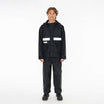
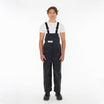
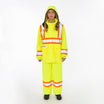
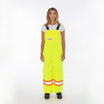
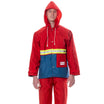
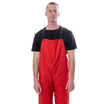
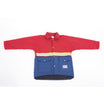
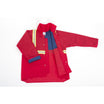
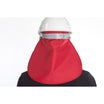

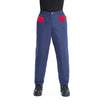
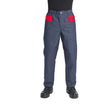
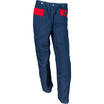
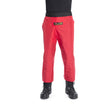
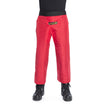
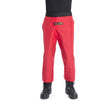
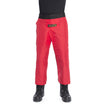
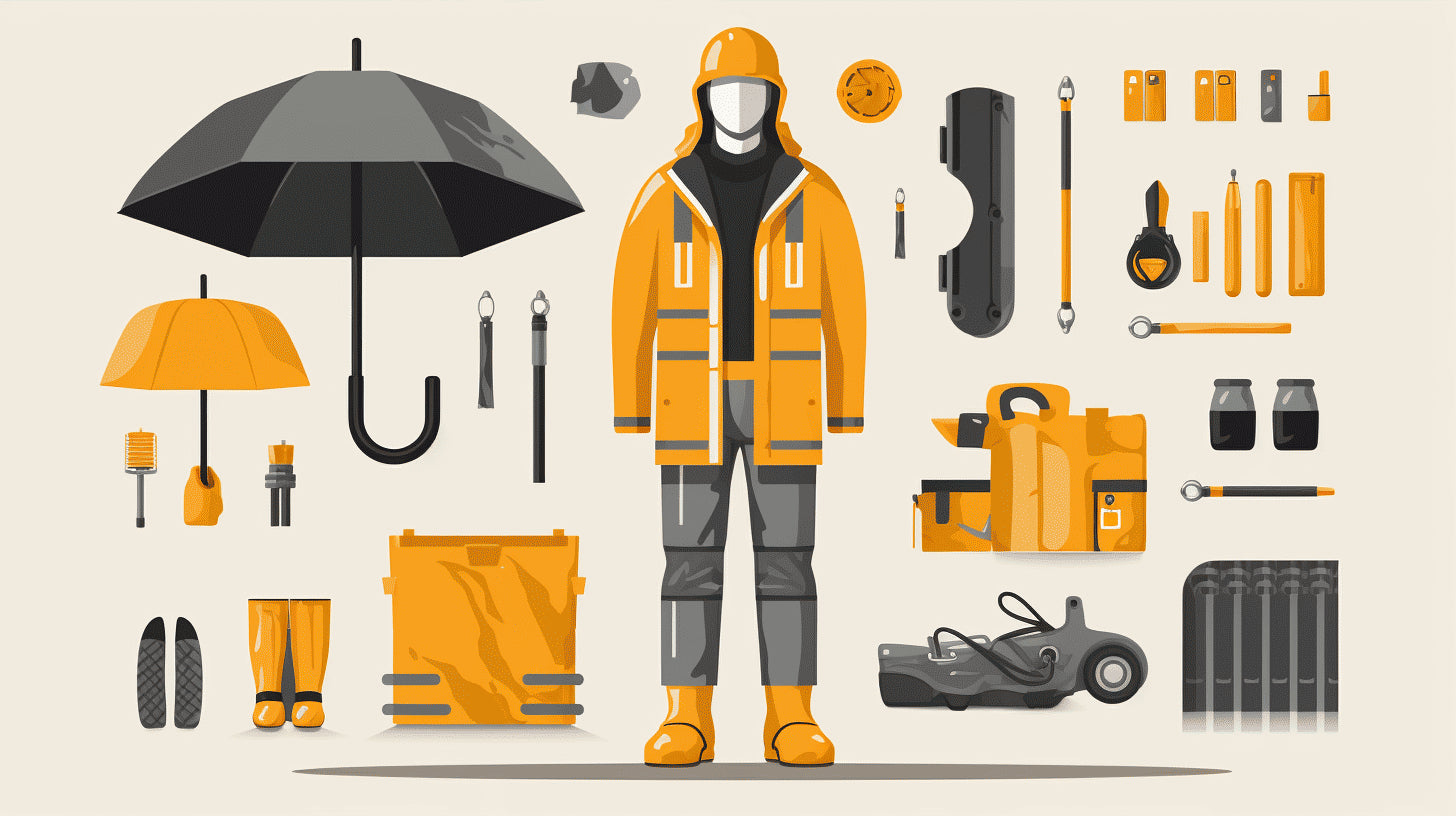
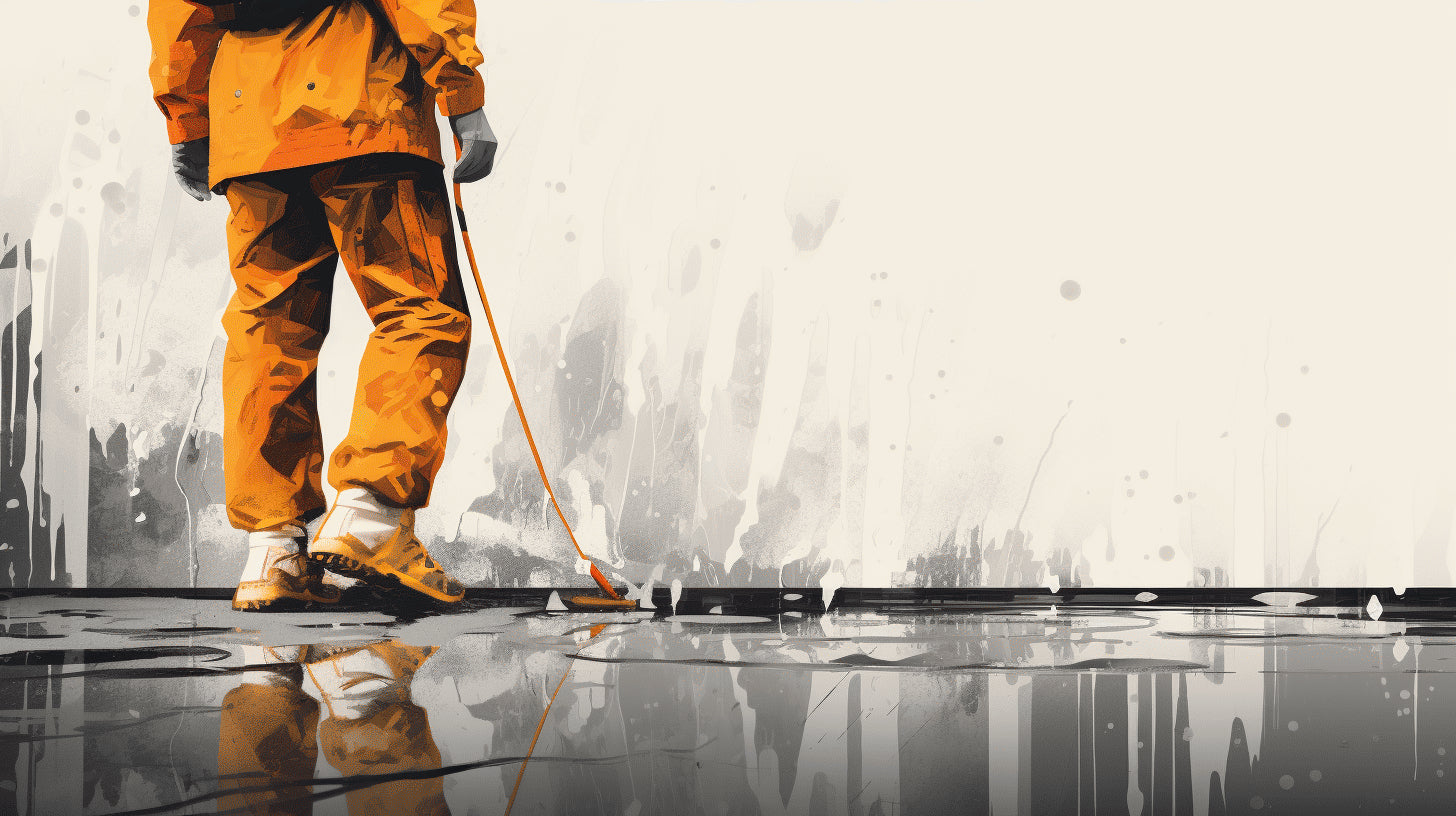
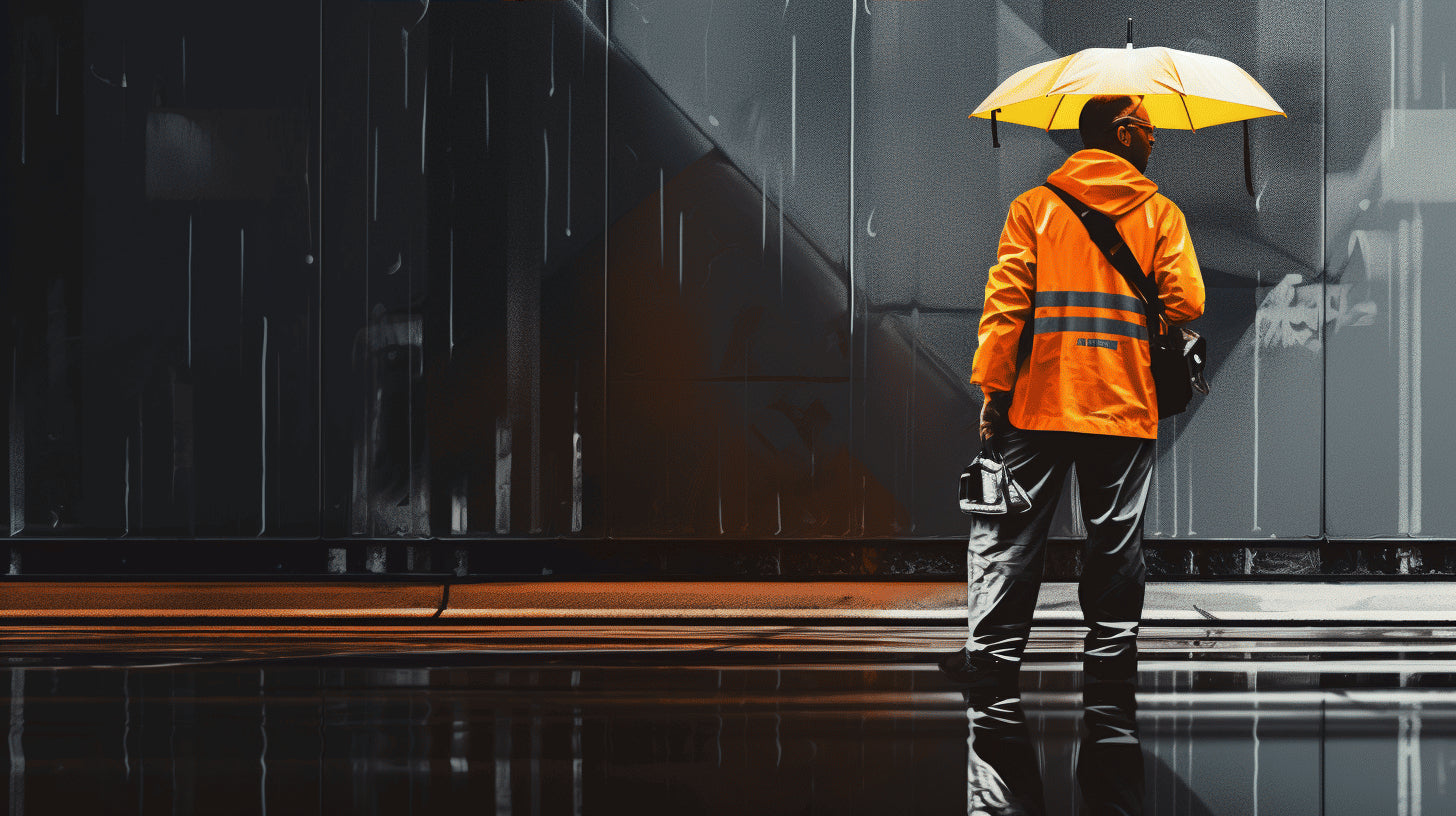
Leave a comment
This site is protected by hCaptcha and the hCaptcha Privacy Policy and Terms of Service apply.